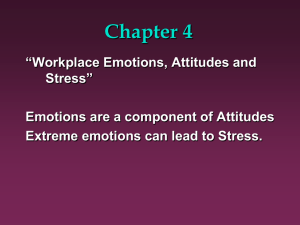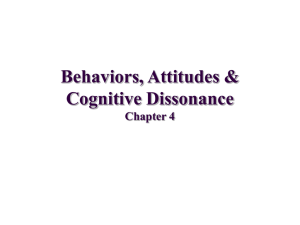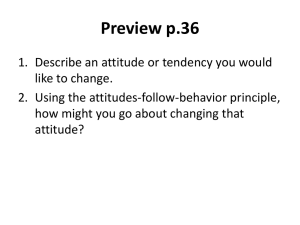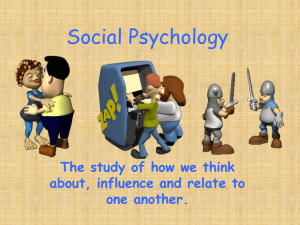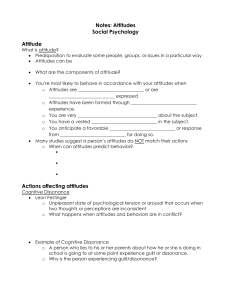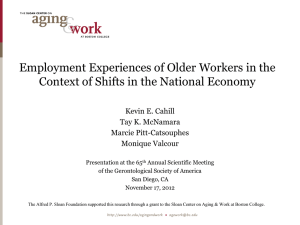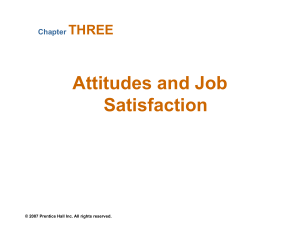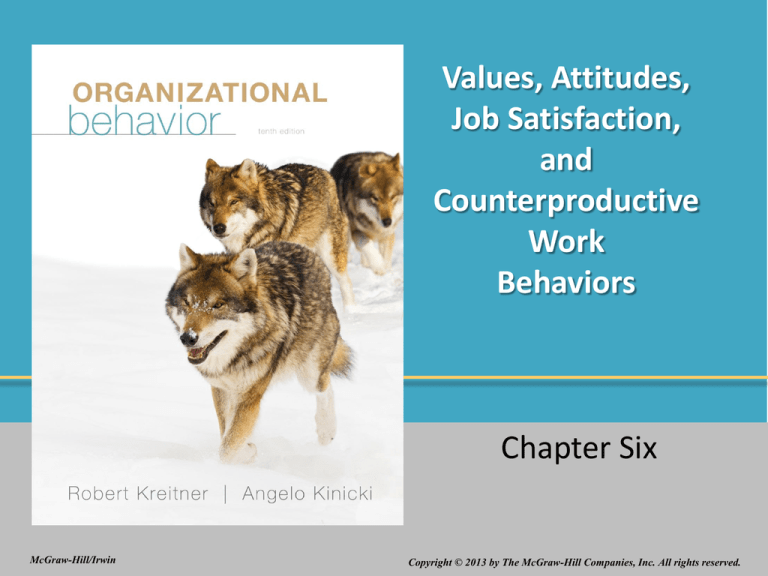
Values, Attitudes,
Job Satisfaction,
and
Counterproductive
Work
Behaviors
Chapter Six
McGraw-Hill/Irwin
© 2013
The McGraw-Hill Companies, Inc. All rights reserved.
Copyright © 2013 by The McGraw-Hill Companies, Inc. All rights reserved.
Learning Objectives
LO.1 Explain Schwartz’s value theory, and describe
three types of value conflict.
LO.2 Describe the values model of work–family conflict,
and specify at least three practical lessons from
work–family conflict research.
LO.3 Identify the three components of attitudes and
discuss cognitive dissonance.
LO.4 Explain how attitudes affect behavior in terms of
Ajzen’s theory of planned behavior.
LO.5 Describe the model of organizational commitment.
6-2
Learning Objectives (cont.)
LO.6 Define the work attitudes of employee engagement
and job satisfaction.
LO.7 Identify and briefly describe five alternative causes
of job satisfaction.
LO.8 Identify eight important correlates/consequences of
job satisfaction, and summarize how each one
relates to job satisfaction.
LO.9 Identify the causes of counterproductive work
behaviors and the measures used to prevent
them.
6-3
Definition of Values and Motives in
Schwartz’s Theory
6-4
A Values Model of
Work–Family Conflict
6-5
The Nature of Attitudes
Affective component
the feelings or emotions one has about an
object or situation
Cognitive component
the evaluation or belief one has about an object
or situation
Behavioral component
how one intends to act or behave toward
someone or something
6-6
When Attitudes and Reality Collide:
Cognitive Dissonance
Cognitive dissonance
psychological discomfort a person experiences
when his or her attitudes or beliefs are
incompatible with his or her behavior
6-7
Cognitive Dissonance
How people reduce dissonance
1.Change your attitude or behavior, or both
2.Belittle the importance of the inconsistent
behavior
3.Find consonant elements that outweigh the
dissonant ones
6-8
Determinants of Intention
Attitude toward the behavior
the degree to which a person has a favorable
or unfavorable evaluation or appraisal of the
behavior in question.
Subjective norm
refers to the perceived social pressure to
perform or not to perform the behavior
6-9
Ajzen’s Theory of Planned Behavior
6-10
Organizational Commitment
Organizational commitment
reflects the extent to which an individual
identifies with an organization and is committed
to its goals.
6-11
A Model of Organizational
Commitment
6-12
Causes of Job Satisfaction
Need fulfillment
extent to which the characteristics of a job allow
an individual to fulfill his or her needs
Discrepancies
satisfaction is a result of met expectations
Value attainment
Extent to which a job allows fulfillment of one’s
work values
6-13
Correlates of Job Satisfaction
6-14
Counterproductive Work Behavior
Counterproductive work behavior
represent types of behavior that harm
employees, the organization as a whole, or
organizational stakeholders such as customers
and shareholders.
6-15

